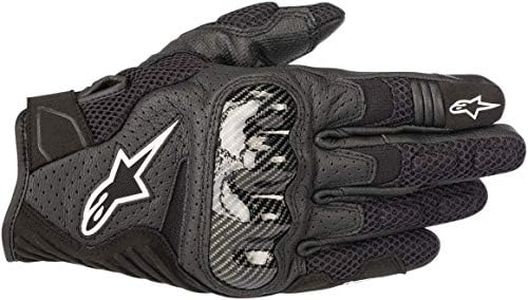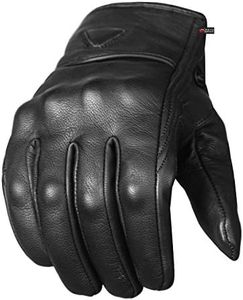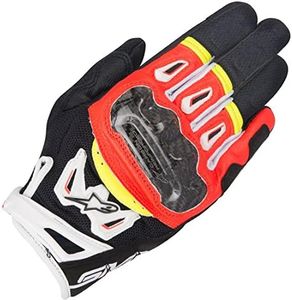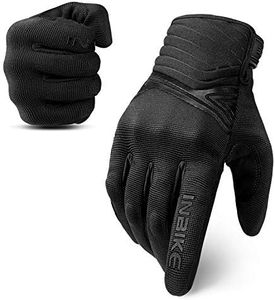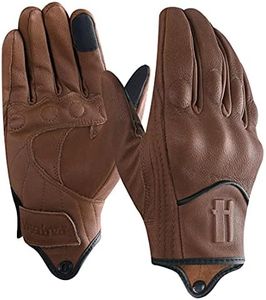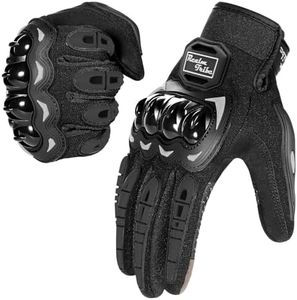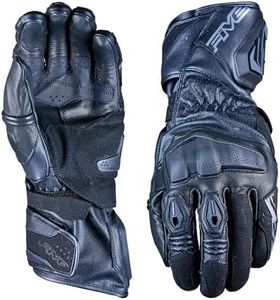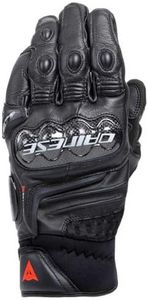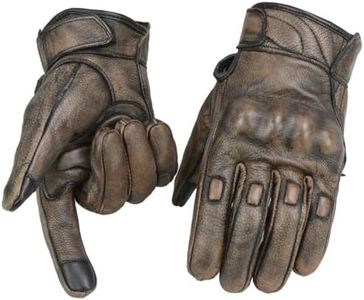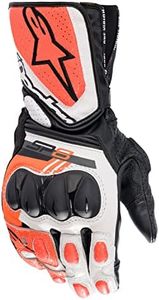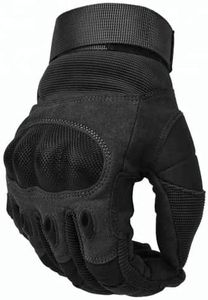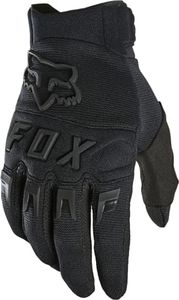We Use CookiesWe use cookies to enhance the security, performance,
functionality and for analytical and promotional activities. By continuing to browse this site you
are agreeing to our privacy policy
10 Best Motorcycle Gloves
From leading brands and best sellers available on the web.By clicking on a link to a third party's website, log data is shared with that third party.
Buying Guide for the Best Motorcycle Gloves
Choosing the right motorcycle gloves is important for your safety, comfort, and overall riding experience. Motorcycle gloves do much more than just keep your hands warm—they protect your skin and knuckles in case of a fall, reduce vibrations from the handlebars, and improve your grip in different weather conditions. With so many options available, it's helpful to know what to look for so you get gloves that match your riding style and needs.MaterialThe material of motorcycle gloves determines their comfort, protection, and durability. The most common options are leather, textile, or a mix of both. Leather is prized for its natural abrasion resistance and snug fit as it wears in, making it a favorite for frequent or long-distance riders. Textile gloves offer better breathability and weather resistance, ideal for hot or rainy conditions. Hybrid options strike a balance. Choose leather for maximum protection and durability, textile for ventilation or waterproofing, and hybrids if you want a bit of both.
ProtectionProtection features refer to the built-in armor and reinforcement areas on the gloves, such as hard knuckle guards, palm sliders, and extra padding. These elements help absorb impacts and reduce injury in a fall. There are varying levels—some gloves have basic padding, others incorporate tough plastic or metal knuckle covers and additional reinforcements. Casual city riders might opt for lightweight or minimally armored gloves, while those who ride at higher speeds or on track days should look for robust protection features throughout the glove.
Fit and SizingGetting the right fit is crucial for both safety and comfort. Gloves that are too tight can cause discomfort and numbness, while those that are too loose may slide off in a crash and make it hard to operate controls. Fit varies by brand and style, but generally, gloves should feel snug without pinching, and you should be able to move your fingers and make a fist easily. Try them on or measure your hand according to the manufacturer's sizing guide, and consider whether you'll wear liners underneath in colder weather.
Weather AdaptationThis spec addresses how well the gloves handle different weather conditions, such as extreme heat, cold, or rain. Summer gloves often use mesh and lightweight materials for airflow, keeping your hands cool. Winter or cold-weather gloves are insulated and may have waterproof membranes to keep you warm and dry. There are also all-season gloves that aim for versatility. Your typical riding climate matters here—choose ventilated gloves for hot weather, insulated and waterproof gloves for winter, or look for convertible or layered options if you ride year-round.
Grip and ControlThe grip and tactile feel a glove offers significantly affect your ability to control the motorcycle. Gloves with reinforced or textured palms help you maintain a good hold on the handlebars, especially in wet conditions. Thicker gloves may reduce sensitivity, making it harder to manage small switches or levers, while thinner gloves provide better feel but may compromise on insulation or protection. If you ride in technical or traffic-heavy environments, prioritize gloves that give you both good grip and decent feedback.
Cuff Style and ClosureCuff style determines how the glove fits around your wrist and interacts with your jacket. Short-cuff gloves are easier to put on and are popular for casual or summer use, but offer less wrist protection. Gauntlet or long-cuff gloves extend over the wrist, providing extra protection and weatherproofing, favored for touring or high-speed riding. Closure types, like Velcro straps or zippers, ensure a secure fit. Choose based on your riding style—if you want quick on/off for city rides, go for short-cuff; for maximum protection or touring, pick gauntlet-style gloves.

